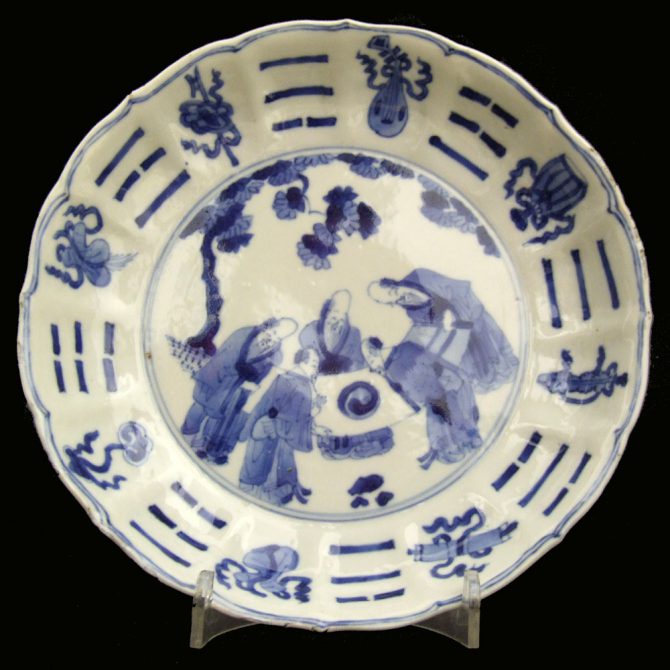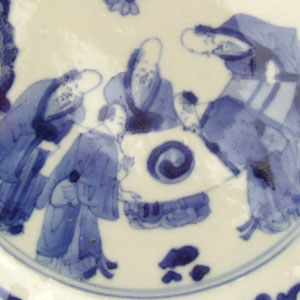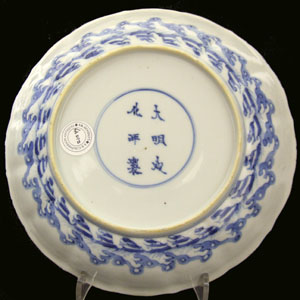
KANGXI 1662 – 1722. Chinese Export Porcelain.
A Blue and White Kangxi Porcelain Dish. This Kangxi Porcelain Dishe Depicts the Five Ancients in the Form of Chinese Sages. The Border with the Eight Trigrams ( ☰ Qián Heaven ☱ Duì Lake/Marsh ☲ Lí Fire ☳ Zhèn Thunder ☴ Xùn Wind ☵ Kǎn Water ☶ Gèn Mountain ☷ Kūn Earth ; and Buddhist Emblems Tied with Ribbons. The Base with an Apocryphal Chenghua Mark (Ming Dynasty 1465-1487).
SOLD
- Condition
- Very good, the rim frited.
- Size
- Diameter : 16.7 cm (6 1/2 inches).
- Provenance
- The Clive D. Collins Collection of Chinese Ceramics and Works of Art.
- Stock number
- 21049
Information
The Five Ancients are the human embodiment of the Wu Xing, the `Five Elements` : earth, fire, water, metal and wood. The power of yin and yang keep the cosmic balance of all earthly and heavenly phenomena which in turn are composed of the `Five Elements`. The Five Ancients are looking at a scroll illustrating the emblem for yin and yang. These two forces together form the Taoist Taiji, `Supreme Ultimate`, which are simultaneously the sign of the unity of the Tao and its duality : male and female, hot and cold, light and dark, hard and soft, wet and dry as well as heaven and earth.
Apocryphal marks are frequently encountered on Kangxi Blue and White Porcelain, the mark of the Ming Emperor Chenghua who reigned from 1465 to 1487 being by far the most common, other Ming marks include Jiajing (1522-1566) and less frequently Wanli (1573-1620). These marks were not added to the piece to deceive, but more as a sign of reverence to earlier potters of the Ming dynasty (1368-1644). Occasionally they are used on pieces copying Ming Porcelain, these objects were probably made for collectors who could not afford the Ming original.
The Ba Gua literally eight symbols are eight diagrams used in Taoist cosmology to represent the fundamental principles of reality, seen as a range of eight interrelated concepts. Each consists of three lines, each either `broken` or `unbroken`, representing a yin line or a yang line, respectively. Due to their tripartite structure, they are often referred to as Trigrams in English.
The trigrams are related to taiji philosophy and the Wu Xing, the `Five Elements`. The relationships between the trigrams are represented in two arrangements, the Primordial, Earlier Heaven or Fuxi bagua, and the Manifested, Later Heaven, or King Wen bagua. The trigrams have correspondences in astronomy, astrology, geography, anatomy, the family, and elsewhere.

